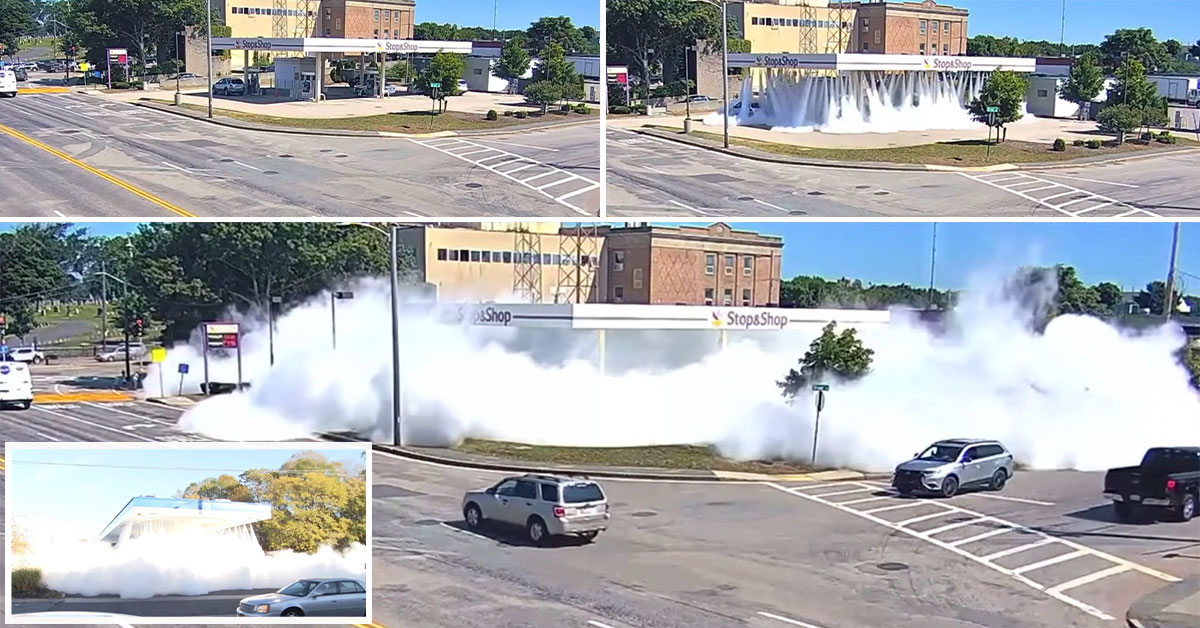Gas Station Fire Suppression System Malfunctions

In a startling video making the rounds on social media, viewers catch a glimpse of the chaos that can ensue when a gas station’s fire suppression system goes haywire. The footage, albeit old, offers a vivid illustration of a scenario most individuals hope to never encounter.
The incident unfolded at a fuel station nestled in Quincy, Massachusetts, where the fire suppression system malfunctioned, unleashing a dense cloud of powder. The powder, intended to douse flames in the event of a fire, instead blanketed cars, unsuspecting individuals fueling their vehicles, and even the adjacent street, resulting in a scene of utter disarray.
Reports from CBS Boston detail the aftermath of the malfunction, describing a surreal tableau of covered cars, bewildered onlookers, and a street veiled in white powder. The sheer magnitude of the suppressant’s spread is evident, with the cloud enveloping not only the immediate vicinity but also spilling onto the nearby street, creating a spectacle that undoubtedly caught the attention of passersby.
Amidst the chaos captured in the video, one can discern individuals hastily retreating from the billowing cloud, their faces etched with a mixture of surprise and concern. Even vehicles parked on the street appear to be affected, with one particular Mitsubishi inching forward, perhaps in an attempt to escape the unexpected deluge of powder.
The scene serves as a stark reminder of the critical role played by fire suppression systems in safeguarding lives and property at gas stations. Designed to act swiftly in the face of a fire emergency, these systems are equipped to deploy various suppressants, including powders and foams, to extinguish flames and prevent the spread of fire.
However, as demonstrated by the Quincy incident, the effectiveness of these systems hinges on proper maintenance and functionality. Malfunctions, though rare, can have far-reaching consequences, potentially causing significant damage and endangering the safety of individuals present at the scene.
In light of such incidents, experts emphasize the importance of regular inspections and maintenance checks to ensure the reliability of fire suppression systems. Routine assessments can help identify potential issues before they escalate into full-blown emergencies, thereby mitigating the risk of system failures and minimizing the likelihood of collateral damage.

Furthermore, incidents like the one in Quincy underscore the need for enhanced public awareness regarding fire safety protocols at gas stations. Educating consumers about the location and proper use of fire extinguishers, emergency shut-off valves, and other safety measures can empower individuals to respond effectively in the event of an emergency, potentially averting disaster.
As the video continues to circulate on social media platforms, it serves as a sobering reminder of the unpredictable nature of emergencies and the importance of preparedness. While the Quincy incident may have resulted in little more than a messy inconvenience, it underscores the critical importance of maintaining functional fire suppression systems to ensure the safety of both patrons and employees at gas stations across the country.

